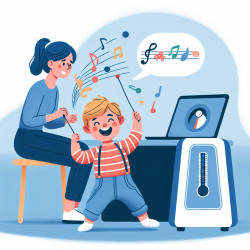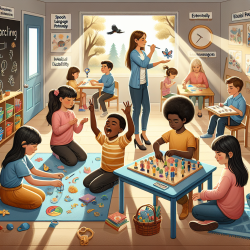As practitioners dedicated to improving the lives of children with autism, we are always on the lookout for evidence-based interventions that can make a real difference. One such promising technique is auditory rhythmic cueing, which has been shown to significantly enhance gross motor skills in children with autism.
A recent study published in the Journal of Physical Therapy Science investigated the impact of auditory rhythmic cueing on gross motor skills in children with autism. The study involved 30 children aged 8-10 years, divided into a control group and a study group. Both groups underwent a specially designed physical therapy program, but the study group received additional gait training with rhythmic auditory stimulation (RAS).
The results were compelling. The study group showed statistically significant improvements in bilateral coordination, balance, running speed and agility, and strength compared to the control group. These findings suggest that integrating RAS into therapy sessions can provide a robust framework for motor planning and execution.
Key Takeaways for Practitioners
- Enhanced Motor Planning: Auditory rhythmic cueing provides a temporal framework for planning motor output, reducing internal demands by offering accurate timing intervals.
- Improved Coordination: The rhythmic stimulus helps synchronize motor responses, enhancing overall coordination and efficiency of movement.
- Neuroplasticity: RAS can improve cortical plasticity, leading to better structural and functional connectivity in the brain.
- Practical Implementation: Incorporate rhythmic auditory cueing in gait training sessions using a metronome or MIDI Cubase musical program to control rhythmic tempo.
For practitioners looking to implement this technique, the steps are straightforward. Begin by measuring the child's comfortable walking cadence and set the metronome beats to match this cadence. Gradually increase the tempo to challenge the child and observe the improvements in motor skills over time.
Given the promising results, it is highly recommended that practitioners consider integrating auditory rhythmic cueing into their therapy sessions. This approach not only enhances motor skills but also provides a fun and engaging way for children to participate in therapy.
For those interested in delving deeper into the research, the original study provides a comprehensive overview of the methodology and results. To read the original research paper, please follow this link: The impact of auditory rhythmic cueing on gross motor skills in children with autism.










